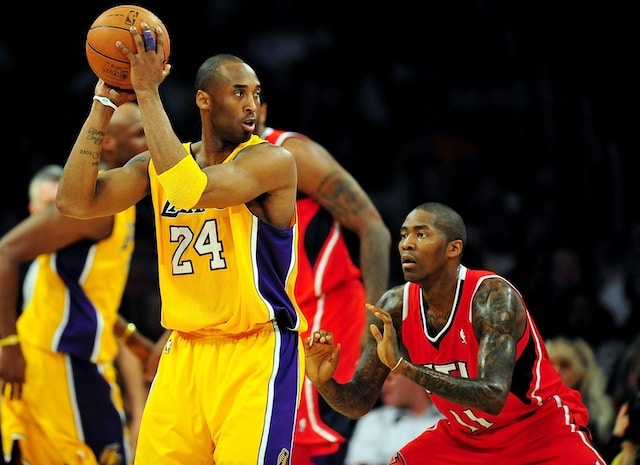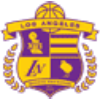Among the oldest franchises in the National Basketball Association, the Los Angeles Lakers are considered among the most reputable. These Lakers are known to have a championship culture and have often been defined by great players, whether drafted or acquired through trades. Over the decades, they have made essential trades that turned the power around in the league. While some moves received shouting applause, others took years to tell a complete picture.
Lakers Nation takes a trip down memory lane, bringing the most significant trade deals in Lakers’ history, how they transformed the team, and culminating in some of the best starting five lineups in NBA history.
Magic Johnson and the 1979 pick
It was not technically a player-for-player trade, but one of the earliest deals to alter the Los Angeles Lakers’ franchise occurred in 1976 when they got a future first-round pick from the New Orleans Jazz. That pick became Magic Johnson in the 1979 NBA Draft. The acquisition of Magic ushered in the “Showtime” era and a new dawn of fast-paced, entertaining basketball.
Magic’s pairing with Kareem Abdul-Jabbar (yet another shrewd acquisition from the Milwaukee Bucks in 1975) would ultimately be the backbone of five NBA titles in the 1980s. The Lakers’ ability to build around Magic’s rare gifts changed the meaning of the point guard position and established one of the league’s early dynasties.
The Kobe Bryant trade
The most legendary trade in Lakers history is the 1996 transaction in which the Lakers sent Vlade Divac to the Charlotte Hornets for Kobe Bryant’s draft rights. At the time, the move was a hot topic—Bryant was just a 17-year-old high-school prodigy with zero college experience.
The gamble worked wonders. Kobe won five NBA championships, two Finals MVPs, and one regular-season MVP. His competitive nature and elite scoring made him a franchise player for twenty years. The trade for Kobe symbolises foresight and a willingness to take risks in transcending greatness for generations.
Creating Legendary NBA starting lineups
The Lakers are significant improvers in individual talent and getting complete rosters together. Whether the 1987 Magic-Kareem-Worthy-Scott team or the 2001 Kobe-Shaq team with a great supporting cast, including Derek Fisher and Robert Horry, their trades have always shaped some legendary NBA starting lineups. Through their successful trades, this thread has built around stars, with the right role players running throughout. It’s about acquiring big names and crafting a team where every piece complements the other.
Doncic for Davis
February 1–2, 2025, would be a night to remember in the basketball world when the Dallas Mavericks traded Luka Dončić to the Los Angeles Lakers in exchange for Anthony Davis in a three-way deal that the Utah Jazz brokered. For the first time in NBA history, two incumbent All-NBA Team players were traded for each other during the regular season.
At the time of the trade, Dončić had just led the Mavericks to the 2024 NBA Finals and was a five-time All-NBA First Team member. He was seen by many as the franchise cornerstone in Dallas; his exit stunned fans and analysts alike. While the Mavericks cited the need to improve their defence, reports suggested that there were doubts internally about Dončić’s weight, conditioning, and humongous contract. The reaction in Dallas was unitedly adverse as fans protested and others demanded GM Nico Harrison’s head.
The mood was jubilant in Los Angeles. Dončić’s elite playmaking and scoring prowess cemented the Lakers through this trade in a time of transition. Analysts quickly started explaining that the Lakers were the clear winners of the deal since Dončić, being young and with superstar cred, was the centre of gravity for the Lakers into the following significant era. Another blockbuster-trade chapter was added to the franchise’s achievements in acquiring generational talents.
Shaquille O’Neal
Moreover, he arrived in Los Angeles as a free agent in 1996. Shaq was eventually sent away from this team in 2004, whereupon the trade brought Lamar Odom, Caron Butler, Brian Grant, and a future first-round pick in return for Shaq. While no one man could fill the void left by Shaquille O’Neal, this particular trade allowed the organisation to begin laying plans for a Kobe Bryant-centred reset, and future acquisitions were undertaken with far greater awareness of prudent roster management principles. He most famously had a pivotal role in the Lakers’ two consecutive titles in 2009 and 2010, as one of the most versatile sixth men in Phil Jackson’s triangle offence.
Pau Gasol and the Return to Glory
In 2008, the greatest mid-season trade was between the Los Angeles Lakers and the Memphis Grizzlies. The Lakers acquired Pau Gasol for Kwame Brown, Javaris Crittenton, Aaron McKie, and the rights to Marc Gasol. Interestingly, although Marc would later come to make a name for himself, the Lakers felt Pau Gasol’s contribution almost immediately.
With the acquisition of Pau Gasol, great passing and post scoring found a partner to Kobe Bryant and forged a tandem that led to three consecutive NBA Finals appearances and two titles. This is a perfect example of a trade that teaches how a right complementary star can easily take a good team to elite status.
In the Los Angeles paradigm, some trades bear fruit only after an extended period. Still, the relentless pursuit of excellence binds L.A.’s history together, elements that more often involve putting together roster spots, acquiring assets, and scouting players to build iconic NBA starting lineups. The Lakers’ history is not just about banners but also those great trades and deals that earned them those championships.





